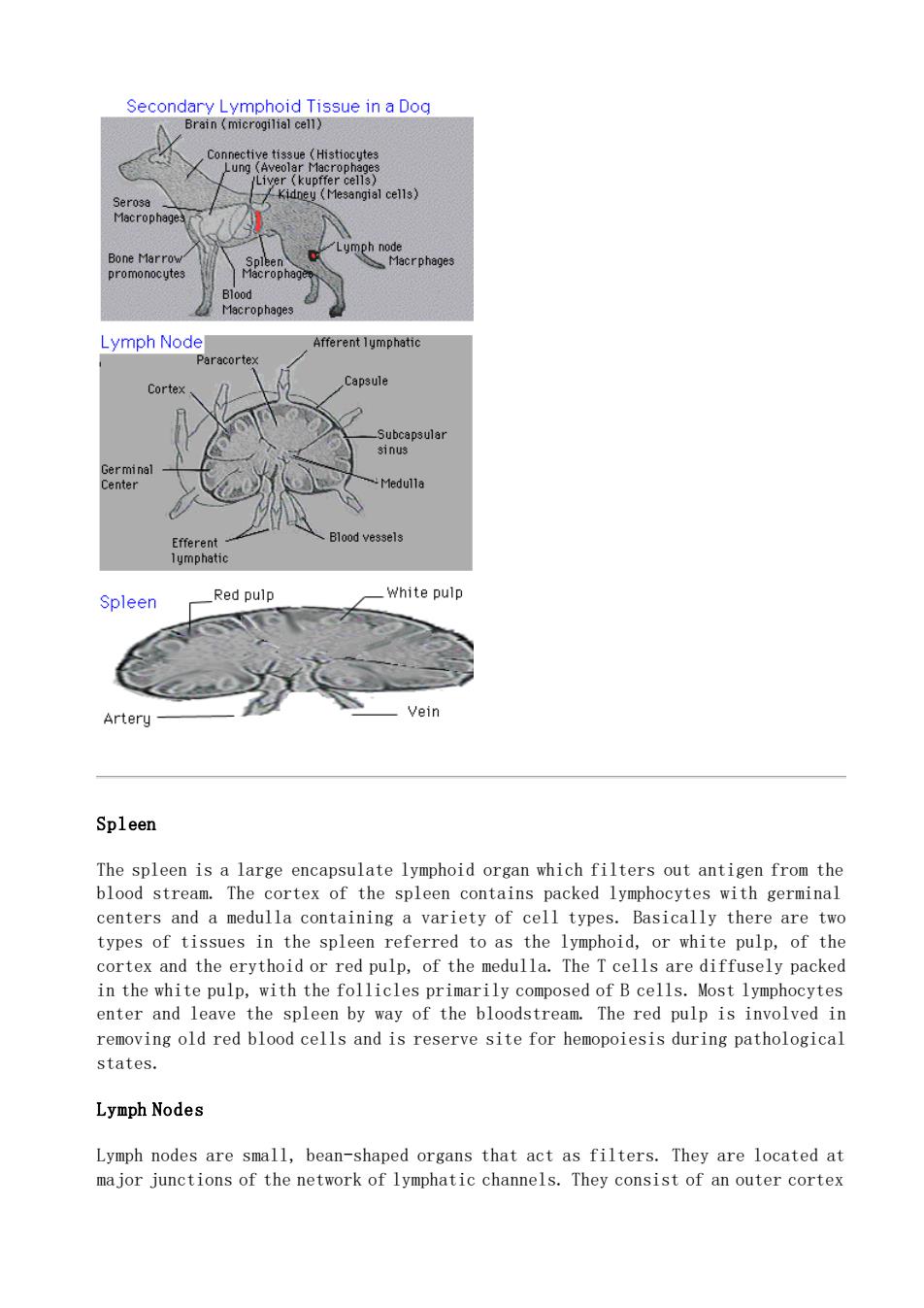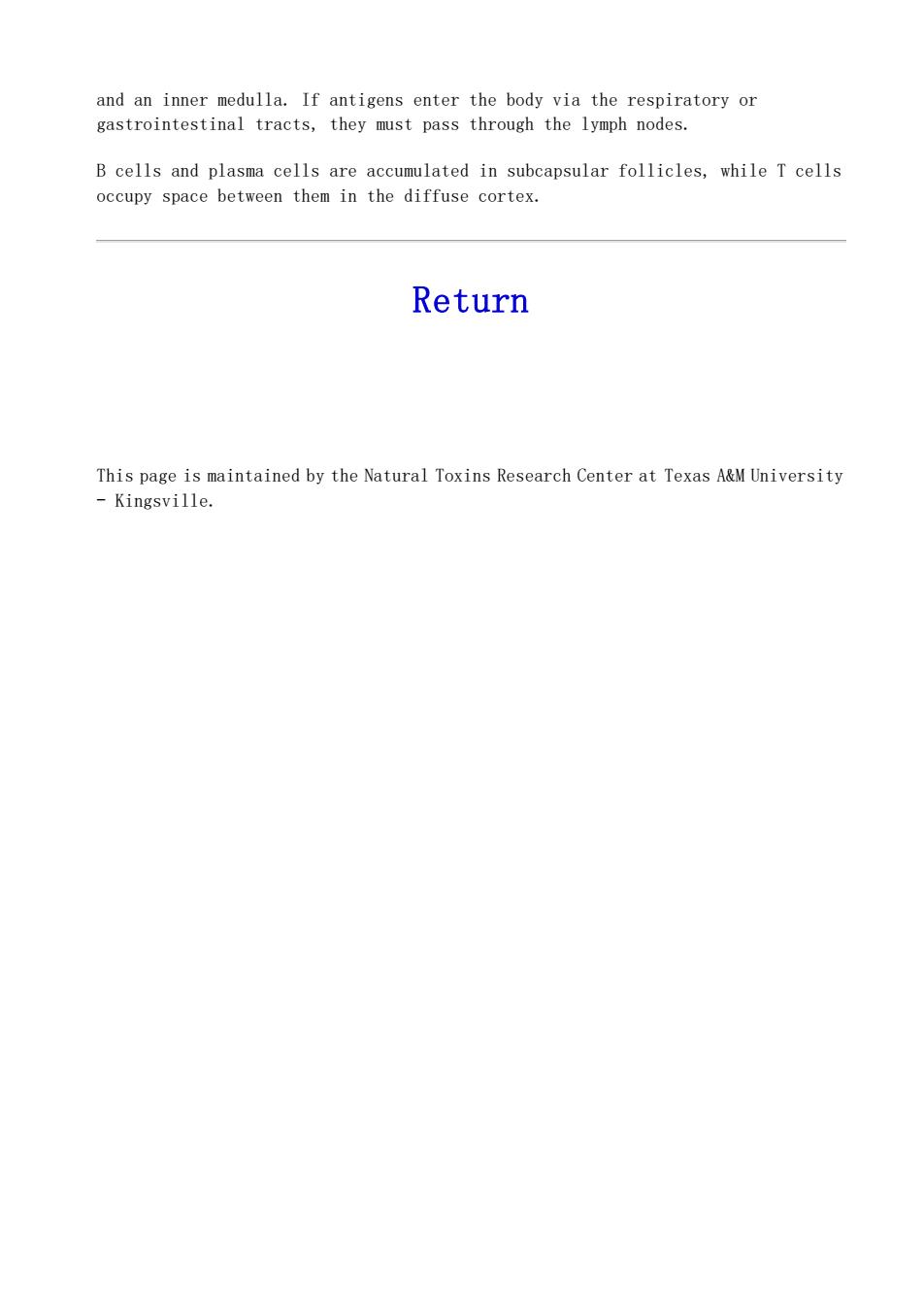
Secondary Lymphoid Organs of the Immune System Organs of the secondary lymphoid system are spleen,Adenoids,tonsils,peyer's patches of the gut,and appendix.The secondary lymphoid organs are where mature T and B cells have ethe bind antigen and undergo o fur he antigen dependen differentiation.The active immune response both cell mediated and humoral immunity begins.All of the secondary lymphoid organs are capable of trapping antigen which normally involves macrophages.These organs contain recirculating lymphocytes,which pass from the blood through the lymphoid tissues back to the blood,it virtually ensures that circulating antigen react with lymphocytes with the proper receptors The size of the lymphocyte pool suggest that there are lymphocytes available to fi any type of antigen. During the course of normal lymphocyte circulation,lymphocytes leave the blood and accumulate in lymphatic tissues,as if by a homing instinct,to set up B and T cell areas.Here they reside temporarily before returning to the circulation.The steadily input and output of e11 ong the lympho id organ: is dis ted ring a primary mmune response. Within 24 hours the antigen becomes localized in the lymph nodes and spleen and this depletes antigen-reactive cells from the circulating pool of lymphocytes.This temporary cessation of lymphocyte recirculation is called lymph node shutdown.Three day later,activated lymphocytes are released into the circulation.This delivers cells of the immune r onse (Band T cells)to tissu and blood stream.The B cell release antibodies and theTcell release lymphokines and antigen-specific effector T cells
Secondary Lymphoid Organs of the Immune System Organs of the secondary lymphoid system are spleen, Adenoids, tonsils, peyer's patches of the gut, and appendix. The secondary lymphoid organs are where mature T and B cells have the opportunity to bind antigen and undergo further antigen dependent differentiation. The active immune response both cell mediated and humoral immunity begins. All of the secondary lymphoid organs are capable of trapping antigen which normally involves macrophages. These organs contain recirculating lymphocytes, which pass from the blood through the lymphoid tissues back to the blood, it virtually ensures that circulating antigen react with lymphocytes with the proper receptors. The size of the lymphocyte pool suggest that there are lymphocytes available to fit any type of antigen. During the course of normal lymphocyte circulation, lymphocytes leave the blood and accumulate in lymphatic tissues, as if by a homing instinct, to set up B and T cell areas. Here they reside temporarily before returning to the circulation. The steadily input and output of cells among the lymphoid organs is disrupted during a primary immune response. Within 24 hours the antigen becomes localized in the lymph nodes and spleen and this depletes antigen-reactive cells from the circulating pool of lymphocytes. This temporary cessation of lymphocyte recirculation is called lymph node shutdown. Three day later, activated lymphocytes are released into the circulation. This delivers cells of the immune response (B and T cells) to tissue and blood stream. The B cell release antibodies and the T cell release lymphokines and antigen-specific effector T cells

Connective tissue Histiocytes 11 one Mar rov Lymph Node Afferent lumphatic sul Cortex Spleer Red pul White pulp Artery Vein Spleen The sple is a large lymphoid rgn ich filters out antigen from the blood stream. s with germinal types of tissues in the spleen referred to as the lymphoid,or white pulp,of the cortex and the erythoid or red pulp,of the medulla.The T cells are diffusely packed in the white pulp.with the follicles primarily composed of b cells.Most ivmphocytes enter and leave the spleen by way of the bloodstream.The red pulp is involved in removing old red blood cells and is reserve site for hemopoiesis during pathological states. Lymph Nodes Lymph nodes are small,bean-shaped organs that act as filters.They are located at major junctions of the network of lymphatic channels.They consist of an outer cortex
Spleen The spleen is a large encapsulate lymphoid organ which filters out antigen from the blood stream. The cortex of the spleen contains packed lymphocytes with germinal centers and a medulla containing a variety of cell types. Basically there are two types of tissues in the spleen referred to as the lymphoid, or white pulp, of the cortex and the erythoid or red pulp, of the medulla. The T cells are diffusely packed in the white pulp, with the follicles primarily composed of B cells. Most lymphocytes enter and leave the spleen by way of the bloodstream. The red pulp is involved in removing old red blood cells and is reserve site for hemopoiesis during pathological states. Lymph Nodes Lymph nodes are small, bean-shaped organs that act as filters. They are located at major junctions of the network of lymphatic channels. They consist of an outer cortex

and an inner medulla.If antigens enter the body via the respiratory or gastrointestinal tracts,they must pass through the lymph nodes. B cells and plasma cells are accumulated in subcapsular follicles,while T cells occupy space between them in the diffuse cortex. Return This page is maintained by the Natural Toxins Research Center at Texas A&M University -Kingsville
and an inner medulla. If antigens enter the body via the respiratory or gastrointestinal tracts, they must pass through the lymph nodes. B cells and plasma cells are accumulated in subcapsular follicles, while T cells occupy space between them in the diffuse cortex. Return This page is maintained by the Natural Toxins Research Center at Texas A&M University - Kingsville